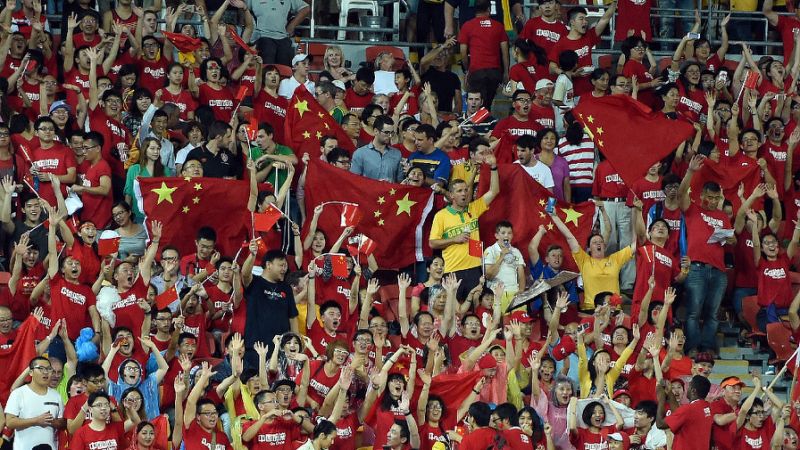It can only be said that 2016 looks to be a banner year for Chinese football. The January transfer window saw the arrival of a cadre of marquee players from the European leagues, including Guangzhou Evergrande’s acquisition of Jackson Martinez from Atletico Madrid and Hebei China Fortune’s purchase of Paris Saint Germain forward Ezequiel Lavezzi. The transfer window saw not only movement in big names but also the rewriting of Chinese football’s financial recordbooks, with Lavezzi’s salary bettered only by Lionel Messi and Cristiano Ronaldo, and China Super League spending in January surpassing that of the European leagues combined. In years past, the foreign player quotas of CSL clubs were filled by a mix of players who were either passed their prime or failed to make the grade back home. The arrival of unquestioned stars has therefore resulted in a sustained spell in the spotlight for the CSL. Eager to capitalize, the Xi administration has redoubled its efforts to promote the state of the game, announcing the 2016 National Football Reform Plan on 12 April 2016.
Compared to the 2015 plan, this year’s version stands somewhere between continuity and expectation management. The ambitious target of establishing 20,000 soccer schools by 2020 remains a headline goal, although it is important to emphasize that meeting this goal likely means nothing more than football being taught in 20,000 schools nationwide by 2020. Widely associated with the 2015 plan was a declaration by Xi Jinping that “I hope both of our national teams will make it to the World Cup finals in the near future.” His so-called “Chinese football dream” called for the men’s team to qualify for, host and win a World Cup, with speculation that the Chinese President had the 2034 World Cup in mind. The 2016 reform plan aims to buy China’s football establishment more time, explicitly stating that these goals are to be accomplished not by 2034, but by 2050. Although websites such as Quartz, the Daily Mail and The Economist have tied the January spending spree to a desire to impress Xi, it also represents a realization that an elite professional league will be as important to the much-vaunted National Schools Football Program in attaining China’s World Cup goals. The tempering of dreams with strategy is a step toward pragmatism in China’s approach to developing the game.
The appearance of pragmatism in China’s football strategy is reflected in the even-handed tone of state media commentary on Chinese football. Xinhua News Agency, one of the foremost state media outlets, has taken to reminding its audience that Chinese football is seeking a restart from a rather low point. In a 22 February 2016 article, Xinhua commented that “China has been struggling in football for decades and only ever qualified for the World Cup once, in 2002.” Noting the exorbitant sums spent during the transfer window, the article maintained its pessimism: “Heavy spending didn’t result in good scorelines as megabucks Chinese clubs had a disappointing opening night in the Asian Champions League on Wednesday.” Similarly, despite the lofty goals of the 2015 reform plan, Xinhua concluded in a year-end op-ed that it had been a “bittersweet year for Chinese soccer.”. The reticence of state media to overhype developments in Chinese football accords with the dialling-back of development targets by the 2016 reform plan.
Looking back, 2015 provides some insight into the challenges facing the development of football in China. A run by the men’s national team to the quarterfinals of the Asian Cup in January provided optimism. Arriving back in Beijing to a hero’s welcome, the team’s performance led to an acceleration in efforts by various organs of the party-state to unveil the 2015 National Football Reform Plan. With exuberant targets across the board, the plan placed great pressure on all entities involved, especially bearing in mind official declarations that President Xi Jinping is a lifelong football fan. The men’s national team, no stranger to poor form, managed two cathartic thrashings of Bhutan but also suffered the ignominy of failing to put a goal past Hong Kong in a home-and-home series in the autumn. The team was also embroiled in a debacle after the Chinese Football Association banned players from wearing non-Nike boots in national team games. The team’s performance in the upcoming third round qualifying competition for the 2018 World Cup will indicate whether football in China is being driven to new heights by government support or stifled by bureaucratic interference.
